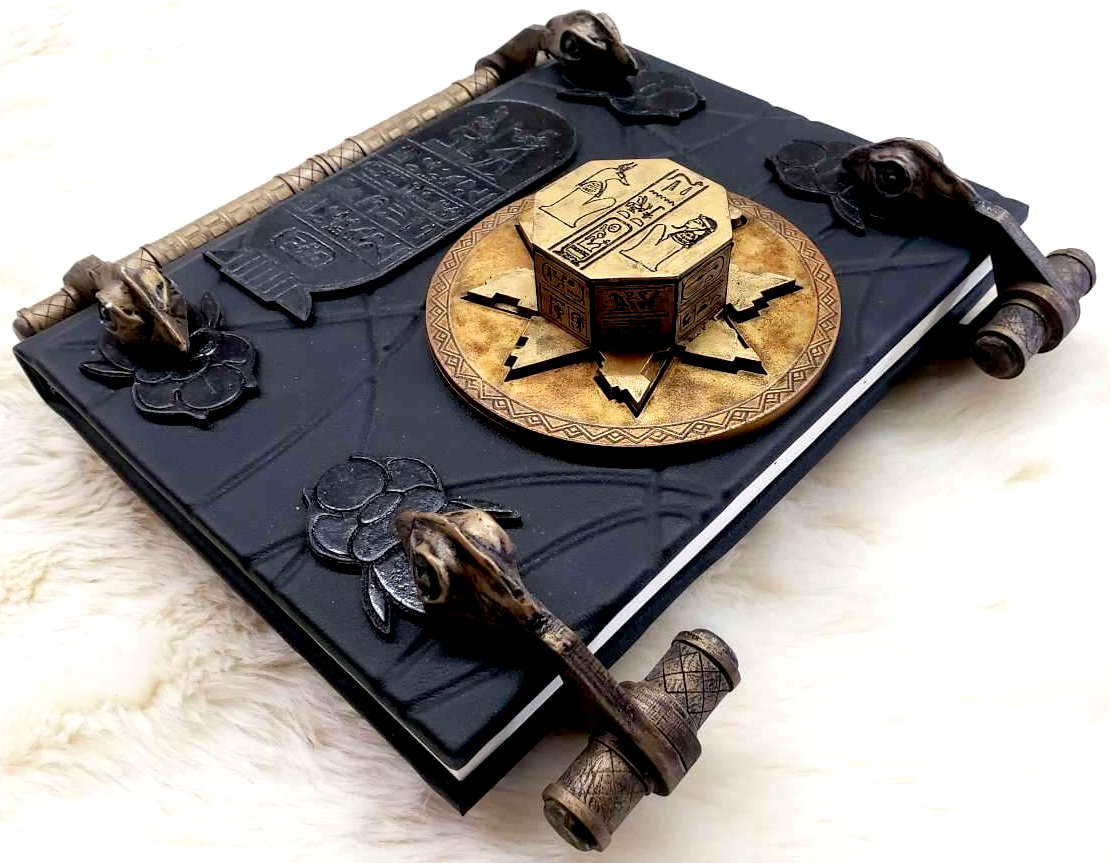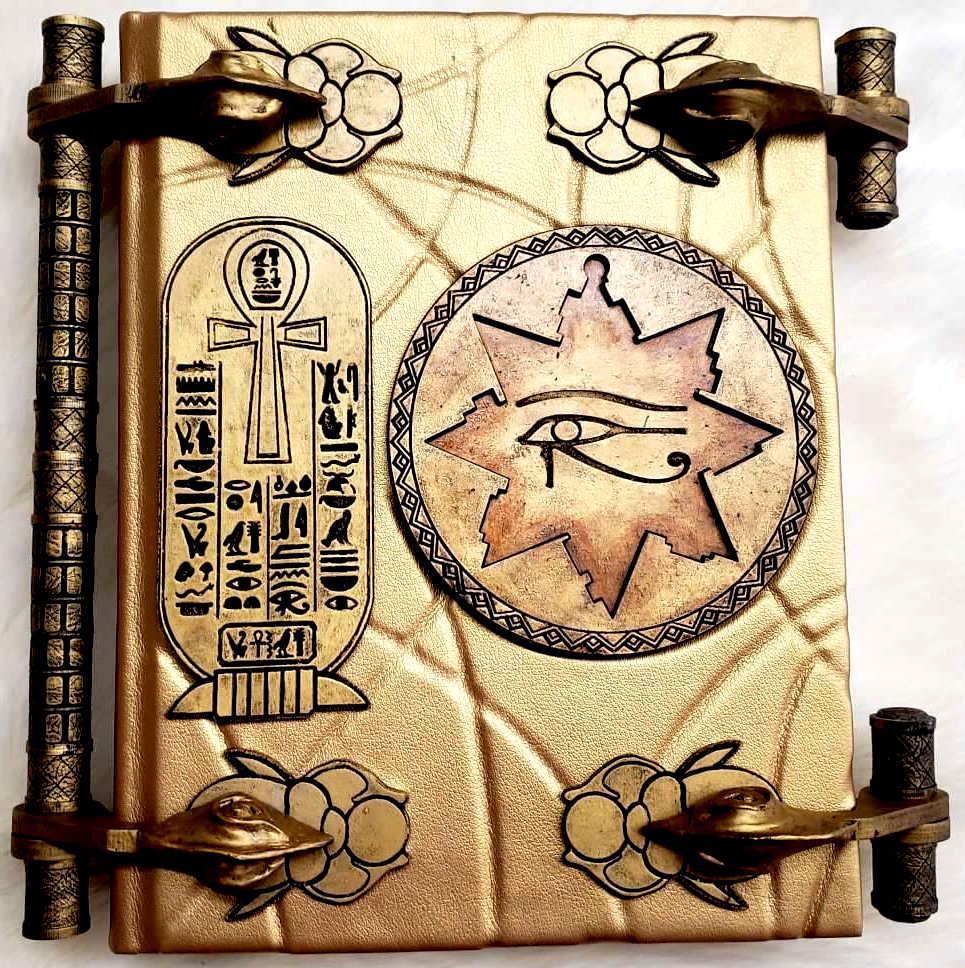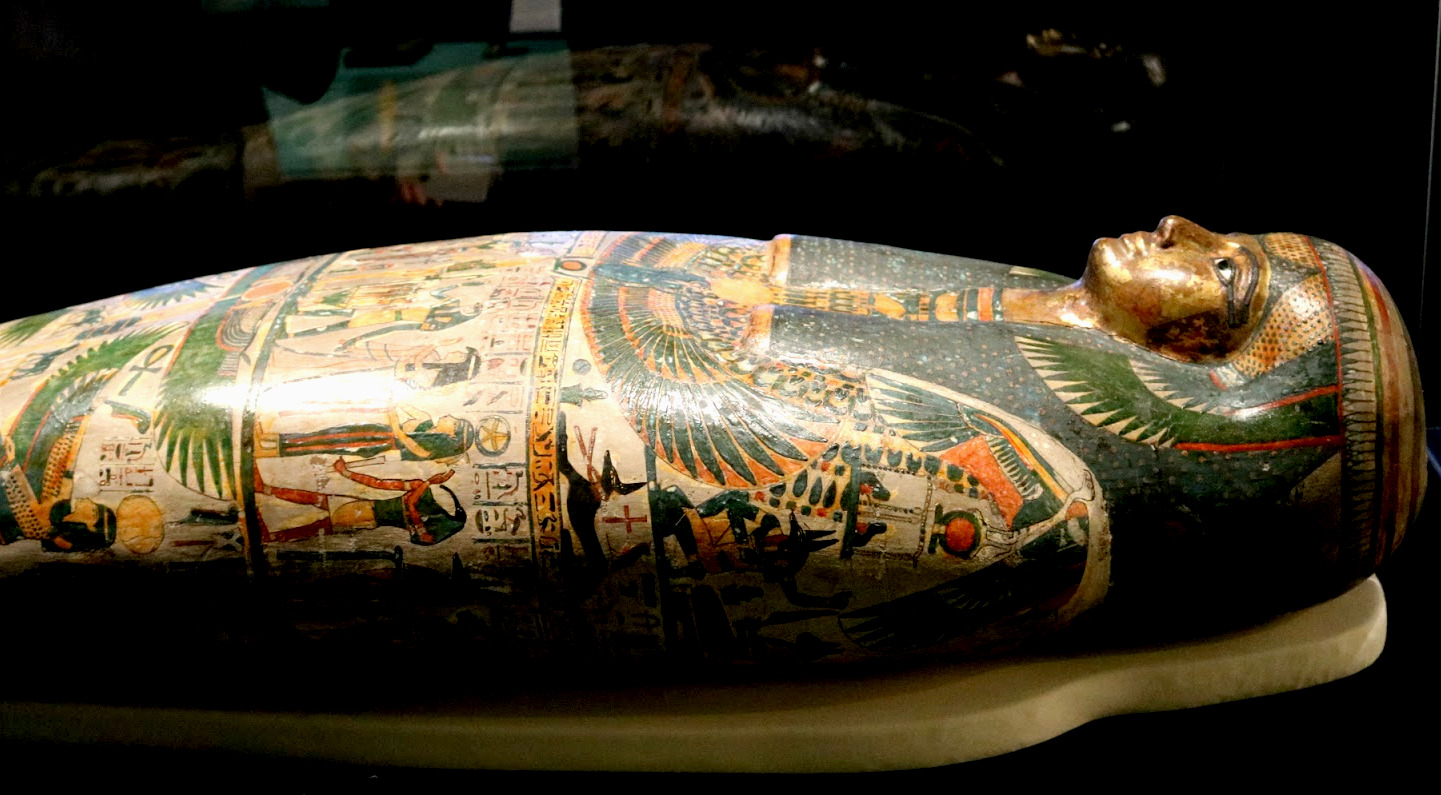The ancient Egyptians spent a lot of time creating hidden underground mausoleums, filled with treasure.
The most famed collection of such elaborate tombs is called "Valley of the Kings," located on the river Nile's west bank near Luxor.
A modern version of this is a library, an archive of stored knowledge for
those who do not yet know about life, now superceded in the digital age,
by the internet. A vast collection of intellectual treasure, history and
patents. Much of which is still kept secret, as proprietary know how. Such
as in manufacturing, medicines and engineering. Where state granted
protections are very limited in the real world.
In
the 1999 film "The
Mummy" “…one of the most famous books in history is buried out there: the Book of
Amun-Ra. It contains within it all the secret incantations of the Old Kingdom.”
Known as the Book of the Living or the Book of Amun Ra, this codex style book was hidden inside of the statue of
Horus at Hamunaptra contains great power – the Book of the Dead gives life, and the Book of the Living takes life away.
Replicas of the Book of the Living and Dead, of King Ramusan and his High
Priest, 'Imhotep,' might very well be your undoing, to drain life, or unleash unspeakable horrors across the land.
Or, just don't open and read aloud from one of these beautiful volumes.
In
Christian writings, there are other books of life. It doesn’t appear that the book of life mentioned by Moses and the psalmist, and the one written about by Apostle’s John and Paul are the same one. One concerns temporary life while the other refers to those who have eternal life through
Jesus
Christ.
In
Christianity and Judaism, the Book of Life is the book in which God records the names of every person who is destined for Heaven and the World to Come.
The world to come, age to come, heaven on Earth, and the Kingdom of God are eschatological phrases reflecting the belief that the current world or current age is flawed or cursed and will be replaced in the future by a better world, age, or paradise.
Amen to that. Indeed, the United
Nations organization is striving for that with their Sustainability
Development Goals. But a fiscal addiction to fossil
fuels, has caused climate
change and rampant inflation. That the ancient Egyptians would not
have countenanced.
The concept is related to but differs from the concepts of heaven or the afterlife in that heaven is another place or state of existence generally seen as above the world, and the afterlife is generally an individual's continued existence after death.

ZOROASTRIAN
ESCHATOLOGY
In Zoroastrian eschatology, the world to come is the frashokereti, where the saoshyant will bring about a resurrection of the dead in the bodies they had before they died. This is followed by a last judgment. The yazatas Airyaman and Atar will melt the metal in the hills and mountains, and the molten metal will then flow across the earth like a
river. All
humankind - both the living and the resurrected dead - will be required to wade through that river, but for the righteous (ashavan) it will seem to be a river of warm milk, while the wicked will be burned. The
river will then flow down to hell, where it will annihilate Angra Mainyu and the last vestiges of wickedness in the universe. The saoshyant is first mentioned as a savior in the Yashts written around 625 and 225 BCE.
CHRISTIAN ESCHATOLOGY
In Christianity, the phrase is found in the Nicene Creed (current Ecumenical version): "We look for the resurrection of the dead, and the life of the world to come." It is also found in the King James Version of the New Testament at Matthew 12:32, Mark 10:30, Luke 18:30, Hebrews 2:5, Hebrews 6:5. Other related expressions are "age to come" which is typically found in more recent translations, Kingdom of God, Messianic Age, Millennial Age, The New
Earth and New Jerusalem, and dispensation of the fulness of times and possibly also eternal life.
HINDU ESCHATOLOGY
In Hindu eschatology the current age is the Kali Yuga, a period of decline. Kalki will appear to purge all evil, beginning a golden age of Satya Yuga.
There have been a range of dates predicted, purportedly from different methods of
calculation. Pothuluru Veerabrahmendra, for example, wrote 400 years ago in his Divya Maha Kala Gnana, or Divine Knowledge of the Time, that Kalki would arrive when the moon, sun, Venus and Jupiter entered the same sign. This is not a rare occurrence and last happened in early 2012, passing without event. The time of arrival of Kalki has not been consistently asserted by astrologers.
The earliest copies of the Mahabharata that exist dates from 200 CE and is the first text to mention Kalki but was likely written in its final form around 400 CE. Kalki is also mentioned in the Vishnu Purana which has a contested date of composition ranging from 400 BCE to 1000 CE.

Book
of the Dead

The
Egyptian Book of Life
ANCIENT EGYPT
Since the mid-twentieth century, scholars have highlighted the similarities between the book of Proverbs and wisdom texts from ancient Egypt, the most recognized being “The Instruction of Amenemope” (ca. 1100 BCE). Consequently, some have asserted that this relationship points toward a likely Egyptian provenance and origin of bibli- cal concepts like the Tree of Life in Proverbs 3:17–18; 11:30; 13:12; 15:4. Recognizing the undisputable contact with ancient Egypt, the present work argues through the method of comparative study that the Tree of Life in the book of Proverbs should not be inter- preted with an ideological antecedent of a divine tree goddess in the New Kingdom period of ancient Egypt.
Daily life in ancient Egypt was focused on enjoying every single moment of time they had and make it memorable as much as
possible, in the belief that life did not end when their physical forms
expired from age. Through their observation of the harmony and the balance of the universe, they were encouraged to live in the same way in order to achieve peace and happiness with themselves and others.
The
Book of the Dead is a collection of funerary texts
thought to protect the departed and protect them for the
afterlife, where the ethos of their time alive in Egypt,
would continue, as part of the perfect time they enjoyed in
mortal form.

Mummification
is a process where the bodies (typically) of dead kings and queens of
Egypt were preserved by treating the skin with embalming ointments, and
wrapping the subject's corpse in bandages, also soaked with preservative
chemicals. In addition, the organs of the royal subjects were removed and
placed in canopic jars.
